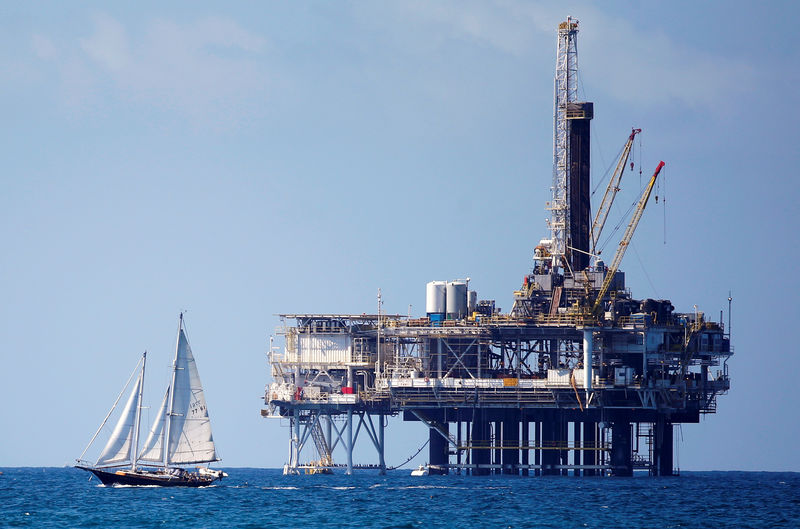 © Reuters. FILE PHOTO: An offshore oil platform is seen in Huntington Beach
© Reuters. FILE PHOTO: An offshore oil platform is seen in Huntington BeachBy Henning Gloystein
SINGAPORE (Reuters) – Oil prices rose on Monday, steadying from steep losses as calmer stock markets found their footing after tumbling in last week’s chaotic trading.
Looming over oil markets, however, was rising production in the United States which is undermining efforts led by the Organization of the Petroleum Exporting Countries (OPEC) and Russia to tighten markets and prop up prices.
Brent crude futures () were at $63.20 per barrel at 0117 GMT, up 41 cents, or 0.7 percent, from the previous close.
U.S. West Texas Intermediate (WTI) crude futures () were at $59.68 a barrel. That was up 48 cents, or 0.8 percent, from their last settlement.
The firmer prices came after crude registered its biggest loss in two years last week as stock markets slumped.
But with U.S. stock markets rebounding on Friday and Asian markets seemingly steadying on Monday, analysts said crude was also supported.
“The bounce in U.S. stocks means some catch-up is possible (for oil),” said Greg McKenna, chief market strategist at futures brokerage AxiTrader.
McKenna said markets on Monday were quiet as “the incentive for traders in Australia or Asia to do anything without the lead of the U.S. is likely to be lacking,” referring to recent U.S. stock market volatility.
It is also a holiday in Japan.
But oil markets still face soaring U.S. oil production
There is a strong indication that output will rise further.
U.S. energy companies added 26 oil rigs looking for new production this week, boosting the count to 791, the highest since April 2015, General Electric’s
The soaring U.S. output is undermining efforts led by OPEC and Russia to withhold production in order to push up prices.
The cuts started in 2017 and are set to last through 2018.
Fusion Media or anyone involved with Fusion Media will not accept any liability for loss or damage as a result of reliance on the information including data, quotes, charts and buy/sell signals contained within this website. Please be fully informed regarding the risks and costs associated with trading the financial markets, it is one of the riskiest investment forms possible.
Source: Investing.com




























